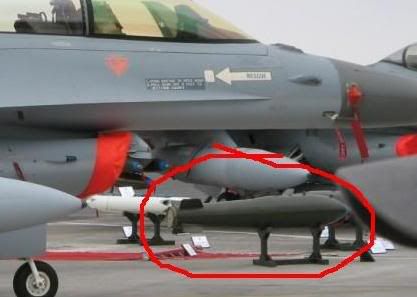http://vimeo.com/47471296
Muchas felicidades!!!











Batalla de Matasiete escribió:Parece una bomba de caida libre desarrollada apartir del modelo M117









Seguir los vuelos vía satélite y reforzar a los pilotos en vuelos con viento cruzado, acharrado y turbulencias, fueron parte de los procedimientos que se cambiaron en la Fuerza Aérea de Chile (Fach) tras el accidente de Juan Fernández.
El repaso a los conocimientos de emergencia lo hicieron en mayo y la implementación de seguimiento satelital en zonas remotas o sin cobertura, finalizará en 2014.
Así lo dio a conocer el secretario general de la Fach, general de brigada áerea, Maximiliano Larraechea, que informó del avance de las 18 medidas que diseñó para reforzar sus operaciones aéreas en sus fases de planificación, ejecución y control.
Del total de estas medidas, un 84% se habrá ejecutado antes de que finalice el 2012, mientras que sólo un 16% se realizará en 2013.
Entre las medidas también está: la creación de una subdirección de certificación operacional y aeronavegabilidad del Estado Mayor General de la Fach (materializado en marzo), que monitoreará de forma centralizada que los ingenieros y especialistas que revisan los aviones cumplan ciertos requisitos y que las naves estén en buenas condiciones.
Otra medida es la revisión y actualización del Manual de Control de Actividades de Vuelo serue C20; y la revisión y actualizaciób de la Norma Operacional de la Fuerza Aérea (Nofa), que es la que vela por criterios de seguridad como el punto de no retorno.
También se están revisando los procedimientos de vuelo para cada aeródromo, entre los que hay uno específico para las posiciones insulares, que incluye un protocolo para volar al archipiélago de Juan Fernández, el cual comenzó a ser aplicado durante 2012, e incluye altitudes mínimas a respetar en la fase de aproximación a la pista, análisis meteorológico y horas límites de operación, entre otros.
Los cambios están siendo aplicados desde 2012 y serán unificados en octubre.
También habrá modificaciones al Reglamento General de Evaluación para cursos de vuelo y cursos tácticos, que estandariza la evaluación de los cursos académicos.
Asimismo, se modificará el reglamento que regula el transporte de pasajeros y carga no institucional, donde los civiles que viajen en ellos, serán informados de la naturaleza del vuelo.


Piure escribió:Quien sabe en que contexto se saco esta foto y cuando, quizás mensajes subliminales:
[ Imagen ]
Creditos: Daniel Tichy en RyF
Usuarios navegando por este Foro: ClaudeBot [Bot] y 4 invitados